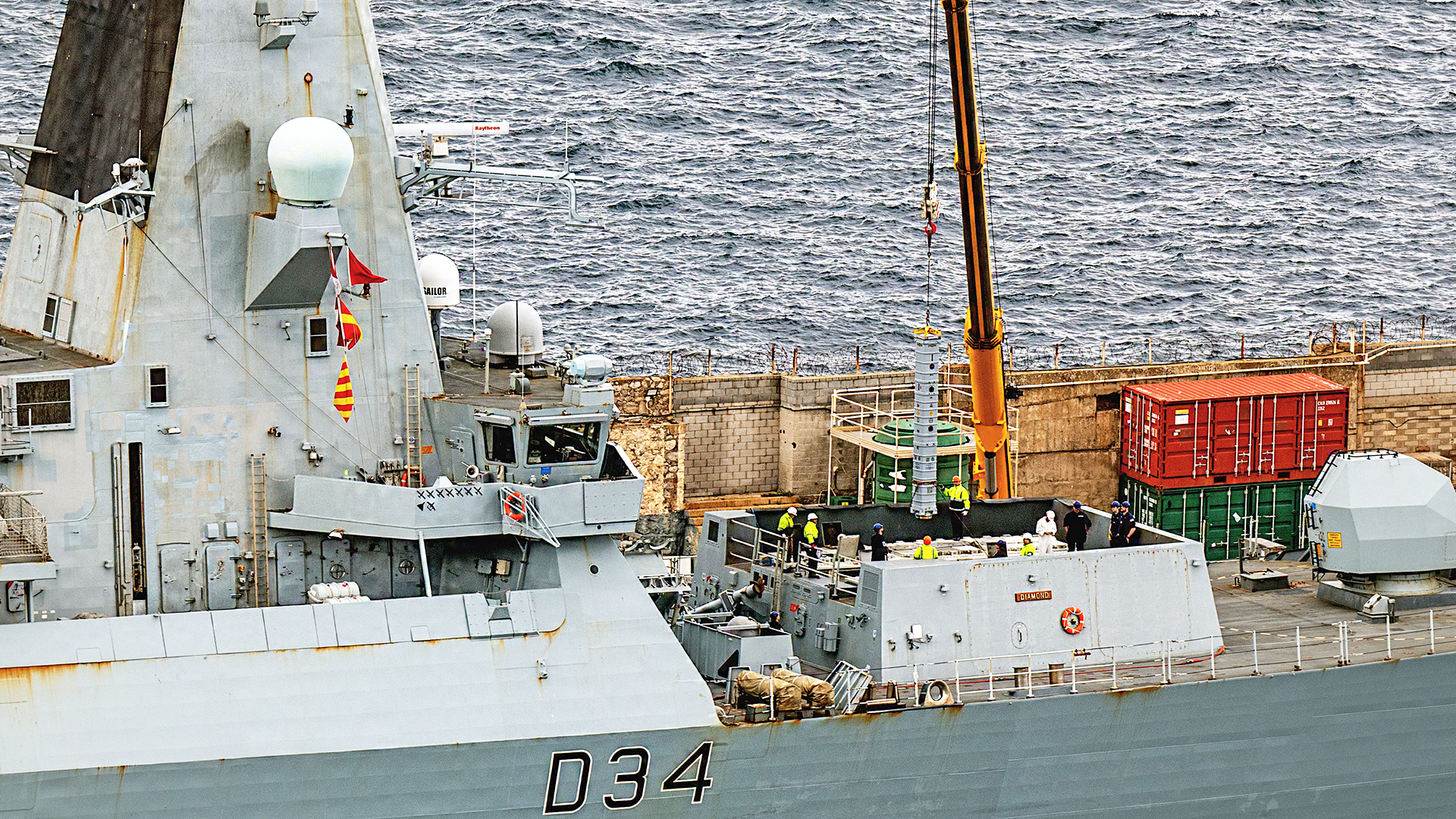HMS Diamond, the Type 45 destroyer that shot down multiple Houthi drones while spending months on patrol around the Bab el-Mandeb Strait, has been reloaded with surface-to-air missiles and is supposedly going to head back to the troubled region soon. The news comes just a couple weeks after the warship had docked in Gibraltar after being relieved on station by the less capable Type 23 Frigate HMS Richmond. At the time, it was reported that HMS Diamond would return home to Portsmouth after a months-long deployment. Now it seems it is heading back into the chaos of the Red Sea region with its magazines fully reloaded and her bridge wings still adorned with drone ‘kill markings.’
Images of the ship being replenished with missiles come from us from Michael Sanchez, who keeps a close eye on naval happenings at and in the vicinity of Gibraltar, and William Jardim. It shows the vertical launch cells on the ship’s bow being reloaded via a crane with Sea Viper all-up rounds.
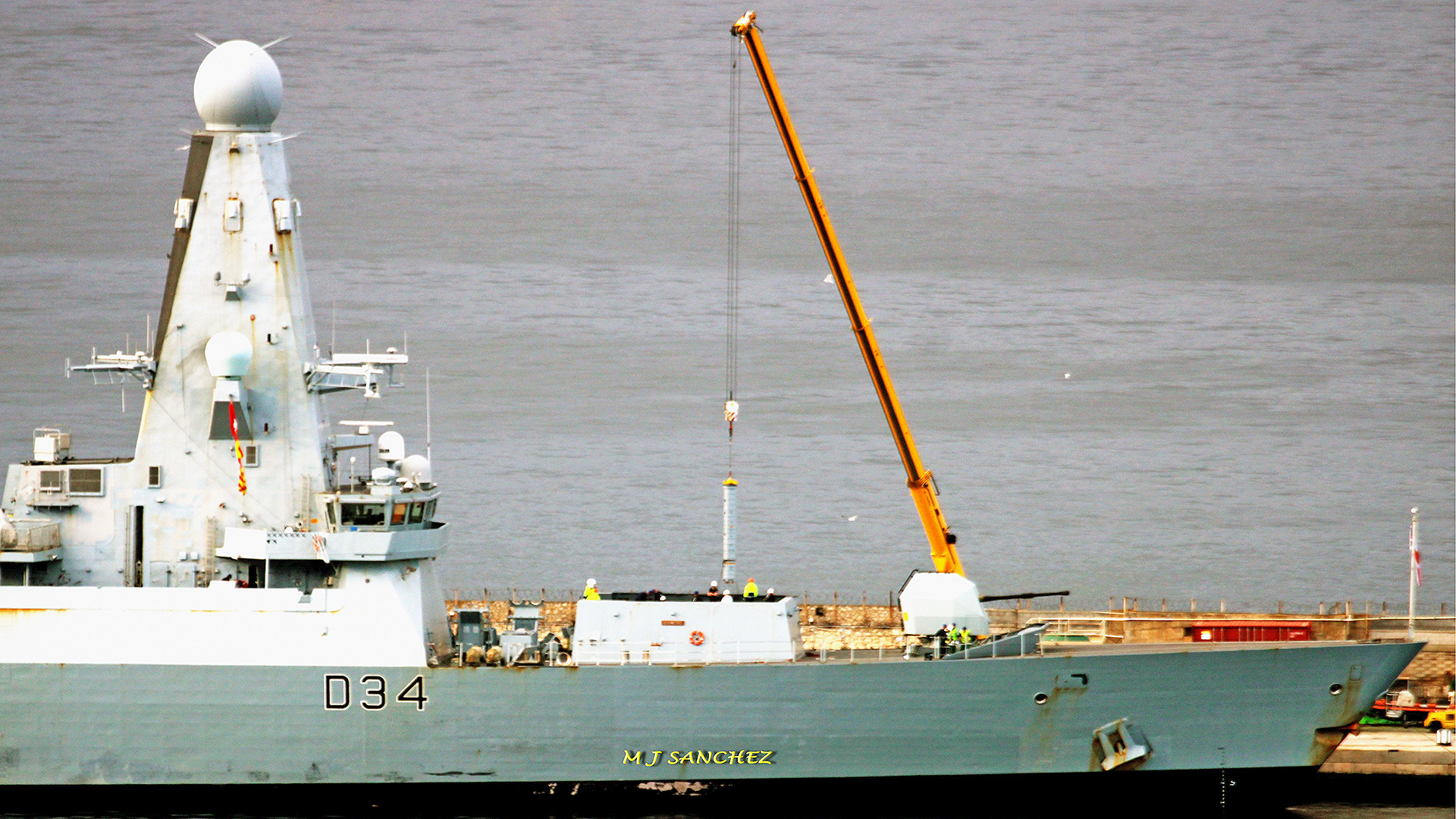
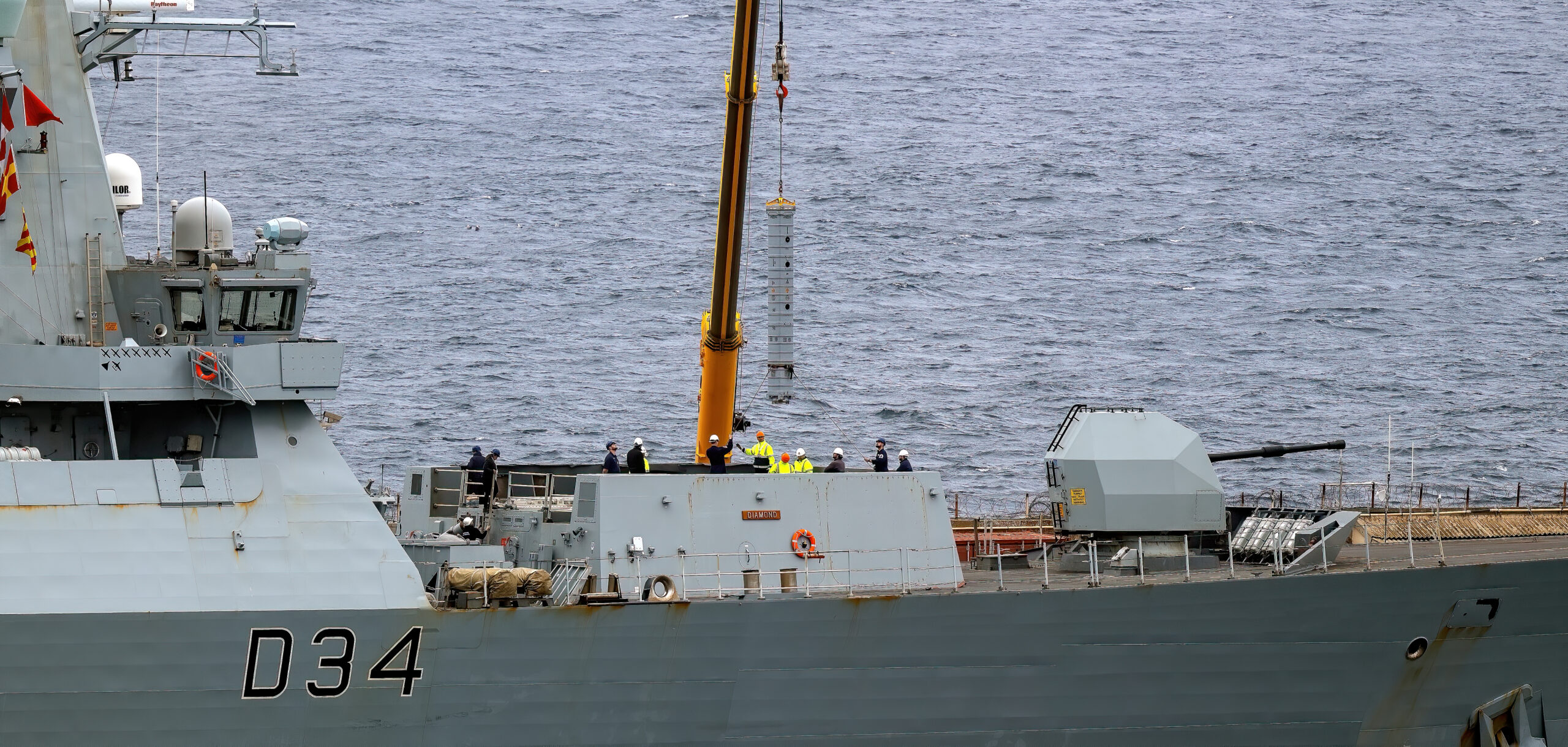
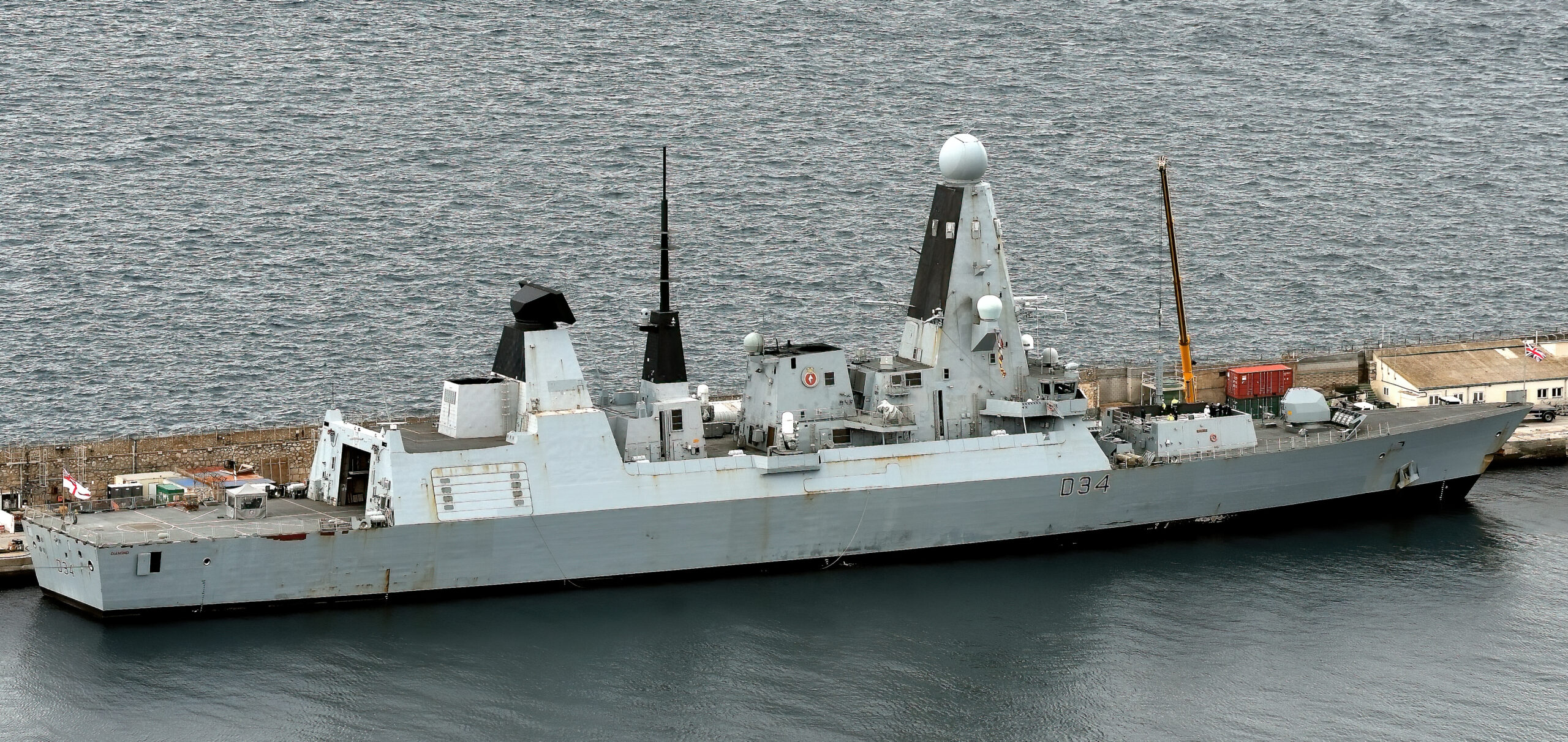
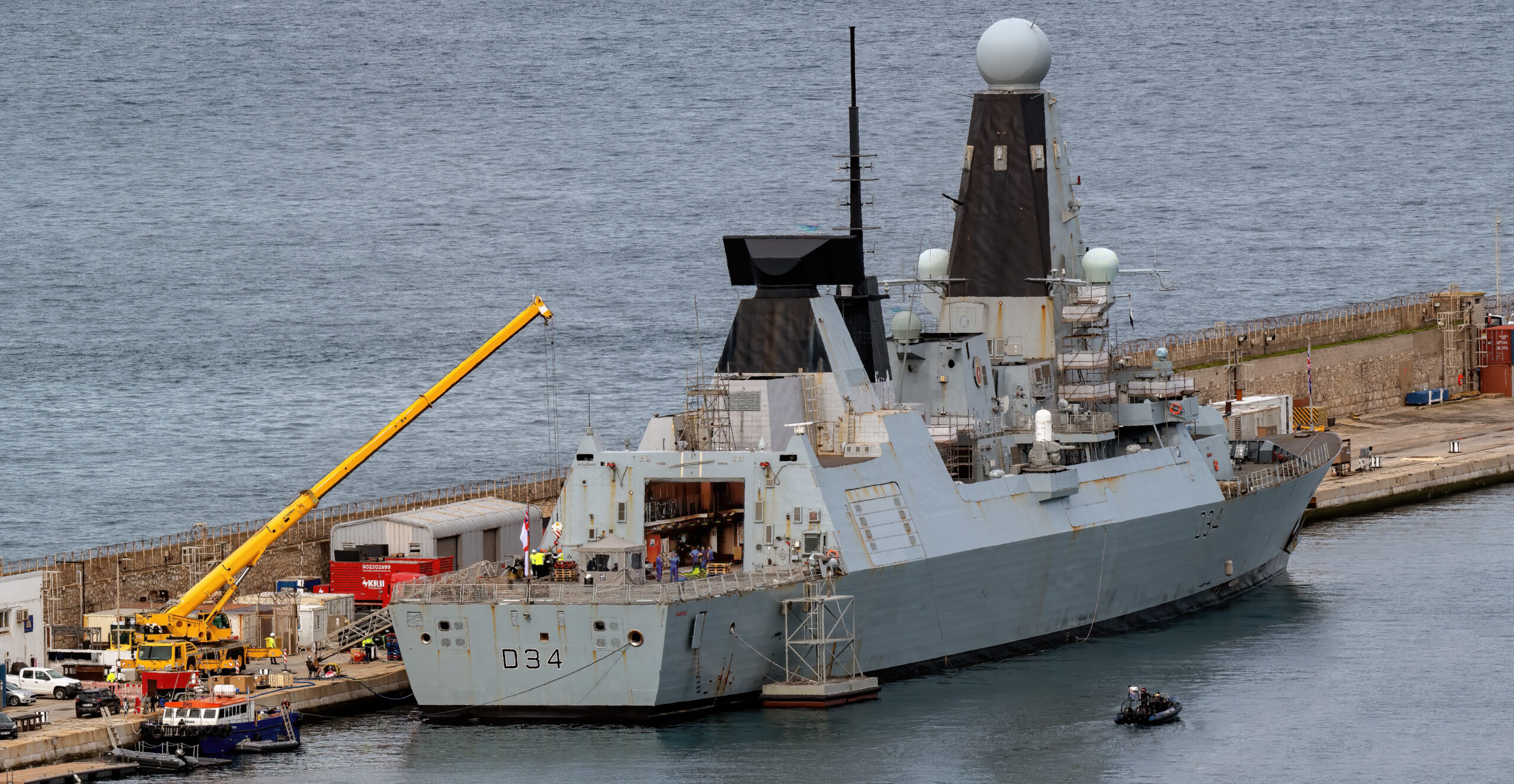
Apparently, the ship has stayed in Gibraltar since arriving there two weeks ago, with its crew getting much-needed rest and the ship being fully replenished and serviced before heading back to its previous station. As to why she was replenished thousands of miles away, our friends over at Navy Lookout state the following:
“It’s about 3,000 miles from the southern Red Sea to Gibraltar and it may seem surprising that HMS Diamond was not replenished in theatre at a nearby port such as Salalah or Duqm. The main reason is that Diamond needed to embark more Sea Viper missiles which have to be stored securely and handled by experts, ideally on British territory. This is not something that can be easily done in Oman and Gib[raltar] has underground weapon storage facilities, dating back centuries that are suitable for holding stocks of these expensive and sensitive weapons. In mid-December, the MoD had already anticipated this requirement and delivered a couple of batches of Sea Vipers to Gib from the UK onboard Point class ro-ro vessels.”
Replenishing warships’ larger missiles at sea is not a common capability, which is a major weakness the U.S. Navy is looking to correct in the coming years.
HMS Diamond has played a key role in the international task force known as Operation Prosperity Guardian, which is in place to protect merchant shipping from attacks by Iranian-backed Houthi forces in Yemen. The ship also works to detect and interdict weapons smuggling — including components of the same kinds of drones that were being launched at it — from Iran to its Houthi proxies in Yemen.
The destroyer, which boasts a crew of 200 sailors and Royal Marines, shot down nine drones via Sea Viper missiles and guns during its time around the Red Sea, which lasted from November to earlier this month. This is part of a larger number of engagements that have seen U.S. warships fire around 100 Standard series missiles at Houthi anti-ship cruise and ballistic missiles, as well as drones. The crisis in the region marks the first use of anti-ship ballistic missiles in anger. The Type 45 British destroyer is now set to receive ballistic missile defense capabilities in the coming years.
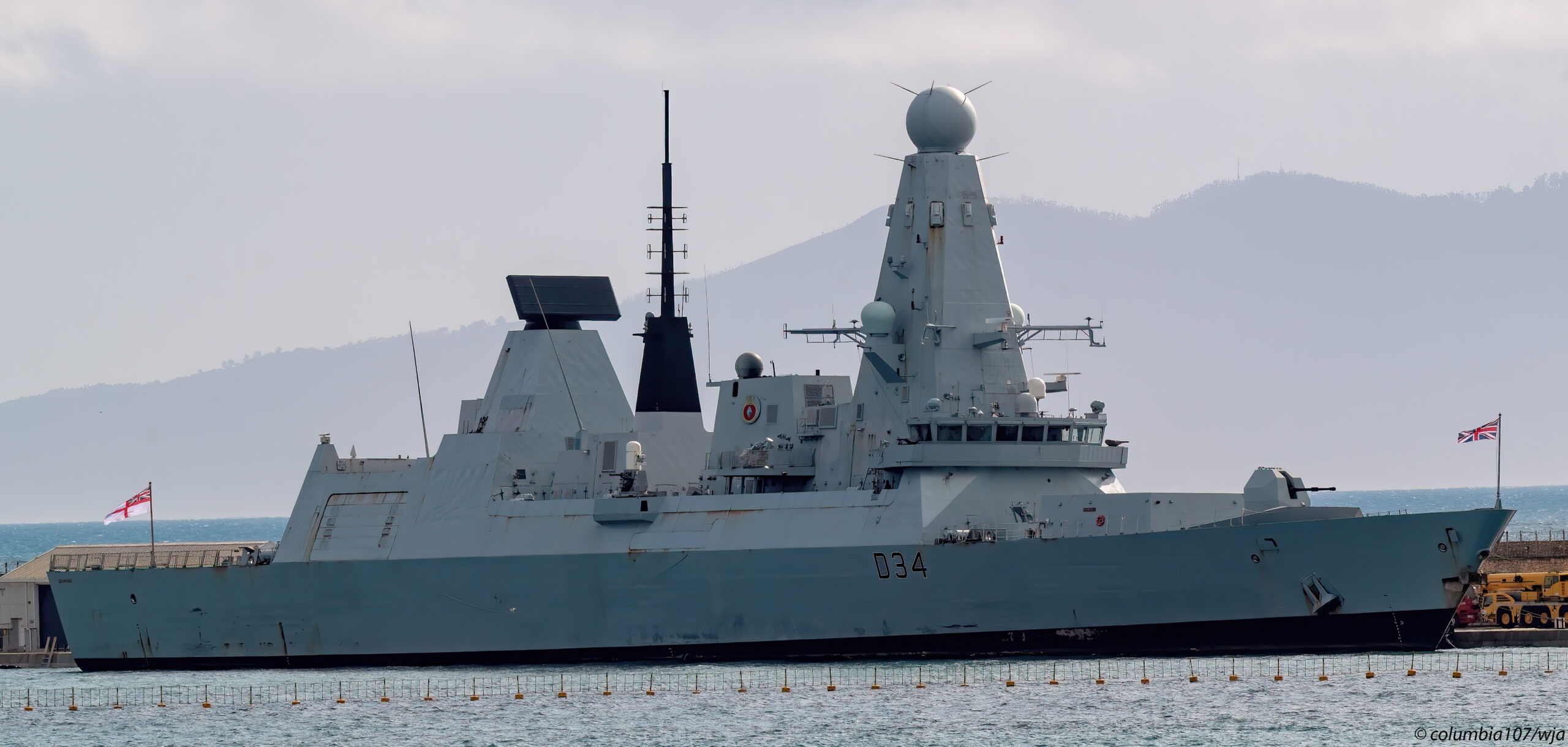
Whilst in Gibraltar, HMS Diamond was visited by U.K. Defense Secretary Grant Schapps to thank the ship’s crew for their work to help protect merchant shipping from Houthi attacks.
As for those attacks, despite repeated strikes against Houthi rebels by British and American forces, including another round just this past weekend, they have shown no sign of stopping. One of those onslaughts against commercial shipping have put a cargo ship at risk of sinking and causing an ecological disaster in the region.
More naval vessels are now headed to the region in the form of a European Union maritime coalition under the name Operation Aspides (Shield) that will work alongside those vessels executing Operation Prosperity Guardian, but not under the same command structure.
With HMS Diamond supposedly heading back into the fight, there will be more of an advanced warship presence around the Bab el-Mandeb than at any time since this conflict kicked off following the attacks by Hamas on Israel on October 7.
Author’s note: A huge thanks to William Jardim for helping with this report.
Contact the author: tyler@twz.com
